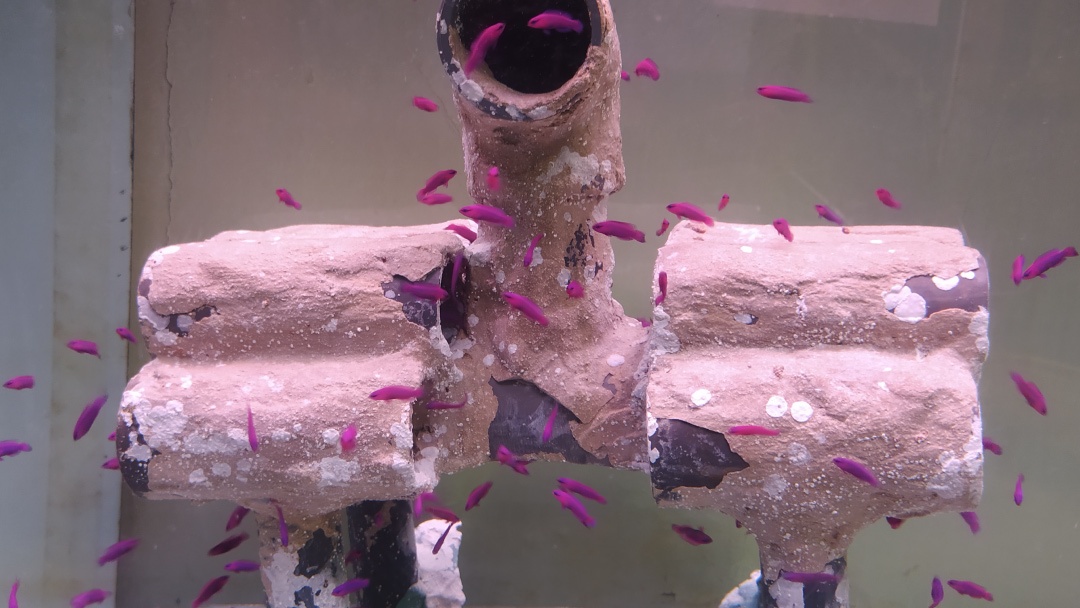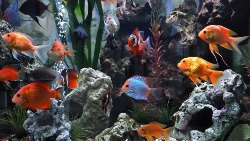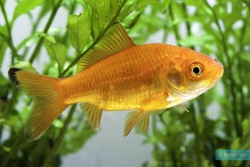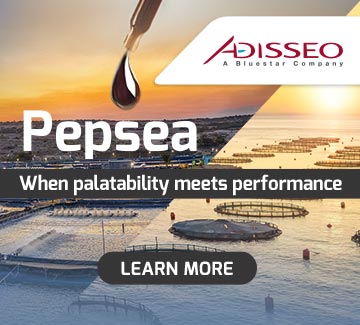 Pseudochromis fridmani juveniles | Photo: Andrea Martino
Pseudochromis fridmani juveniles | Photo: Andrea Martino
A recent study by the Aquaculture Research Group at the University of Las Palmas de Gran Canaria in collaboration with Genoa Aquarium has revealed that copepods of the species Acartia tonsa, enriched with microalgae, outperform traditional rotifers (Brachionus plicatilis) in breeding Pseudochromis fridmani, commonly known as the orchid dottyback, a popular marine ornamental fish. This advancement could represent a breakthrough for the aquarium industry, enhancing both sustainability and the quality of captive-bred fish.
Published in Aquaculture Reports, the study compared the effect of feeding the larvae of this ornamental fish with copepods enriched in essential fatty acids, versus the more typical diet of rotifers used in aquaculture. The findings showed substantial improvements in growth, survival, and skeletal development in the larvae fed on copepods, achieving an 82% survival rate compared to 54% in those fed on rotifers.
The results confirm that using enriched copepods not only boosts larval growth but also mitigates issues such as liver steatosis and delays in intestinal and skeletal development, which are common challenges with rotifer-based diets.
The larvae fed with copepods also developed a stronger skeletal structure, with enhanced mineralization in the skull and spinal areas, resulting in more robust and resilient fish. This aspect is vital for the sustainability of ornamental aquaculture, enabling breeders to raise healthier fish and reduce reliance on wild-caught specimens.
The study further indicates that adopting feeding protocols with these enriched copepods would not only ease the strain on marine ecosystems but also improve the quality and welfare of aquarium-bound fish worldwide.
This discovery advocates for a more sustainable approach within the ornamental fish industry – a growing sector with a multi-billion-pound market value, historically reliant on wild specimen collection.
Key findings
The study provides significant data on the benefits of using enriched copepods, such as an 82% survival rate for larvae fed on copepods, in contrast to 54% for those fed on rotifers.
Larvae fed with copepods also exhibited greater length growth and skeletal development, particularly with increased mineralization in the skull and spinal column.
Moreover, these larvae displayed higher levels of lipids and long-chain polyunsaturated fatty acids, especially EPA and DHA.
Histological analysis revealed better liver and intestinal health in larvae fed with copepods.
Reference:
Andrea Martino, Daniel Montero, Javier Roo, Pedro Castro, Silvia Lavorano, Francisco Otero-Ferrer. Enriched calanoid copepods Acartia tonsa (Dana, 1849) enhances growth, survival, biochemical composition and morphological development during larval first feeding of the orchid dottyback Pseudochromis fridmani (Klausewitz, 1968). Aquaculture Reports




